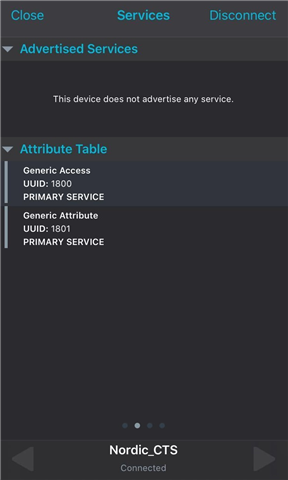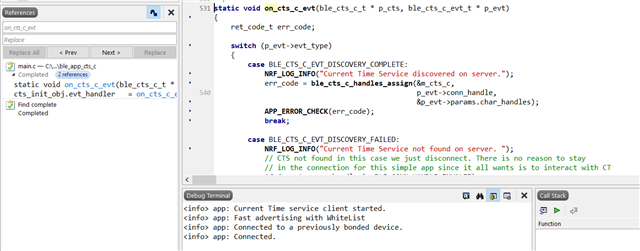Hello, I read the instructions here for using the Nordic NRF Connect app for testing the CTS example: https://devzone.nordicsemi.com/f/nordic-q-a/53382/implementing-current-time-service-example
However, I do not see an option in the app for configuring the GATT server as described. I have an iPhone running iOS 13.6. I am using a Rigado BMD-340 Dev Kit with NRF52840 for running the CTS example. I have the most updated version of the NRF app.
This is a screenshot of what I see when I connect via the NRF Connect app:

As you can see from this screenshot, CTS discovery is not successful - no event seems to be triggered:

Question 1: How do I configure the GATT server on the NRF app to make my phone a Current Time server?
Question 2: How does the current time service get called? In the second screenshot (see references in left sidebar), it is evident that the event handler is never explicitly called. So how is an event generated? Let's say that a current time server is properly set up on the app. What does the client (NRF device) have to do to discover the Current Time Server, or to request a Current Time reading from the server?
Thanks!



